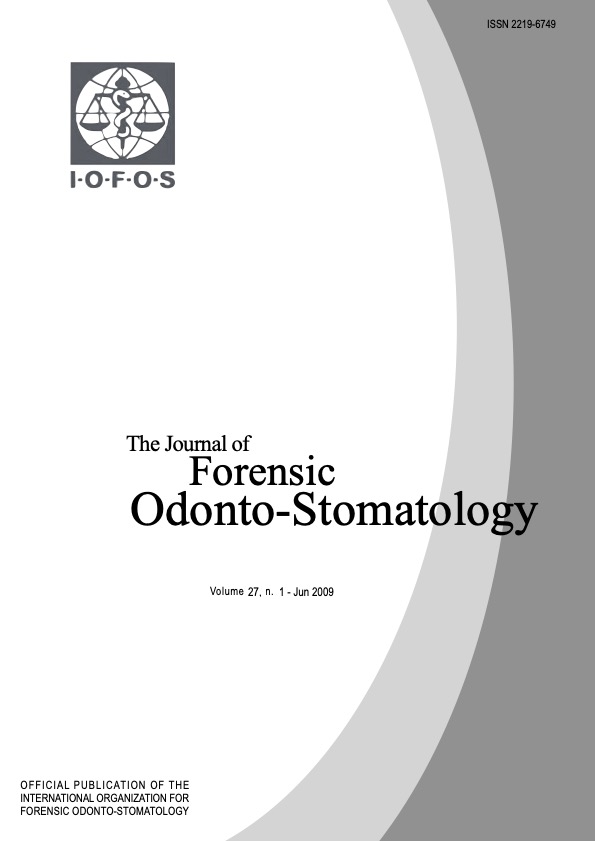The discrimination potential of amalgam restorations identification: part 2
Abstract
The standard dental bitewing radiograph is used to detect interproximal caries but it also provides a specific view of the dental restorations that can be duplicated for identification purposes. The antemortem and postmortem bitewing radiographs are often not at the same angle and result in distorted images of the restorations. The aim of this study was to investigate the progressive increase in angulations of a bitewing radiograph of the same restoration and to determine at what angle the image is distorted sufficiently as not to be recognized. Bitewing radiographs were taken of the same two restorations at 5 ̊, 10 ̊, 15 ̊ and 20 ̊ superior, inferior, mesial and distal to the original 0 ̊bitewing radiograph. Twenty examiners were required to determine at what angle the distortion prevented matching of the image with the original bitewing radiograph. The results showed that the image distortion at 15 ̊became suspect but at 20 ̊none of the images could be matched to the original bitewing radiograph.

